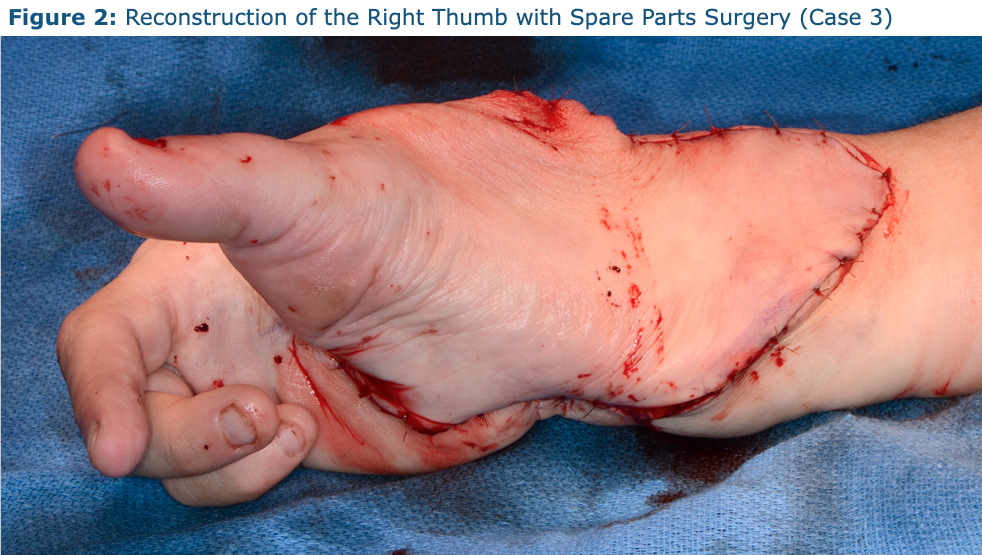The Last Chance to Restore Function: Highlighting Spare Parts Surgery as a Viable Option for Limb Salvage in Injuries Threatening Multiple Limbs
ZoŽ K. Haffner1, Romina Deldar2, Adaah A. Sayyed1, Christopher E. Attinger2, Ryan Katz3, James Higgins3
1Georgetown University School of Medicine, Washington, DC; 2Department of Plastic and Reconstructive Surgery, MedStar Georgetown University Hospital, Washington, DC; 3Curtis National Hand Center, MedStar Union Memorial Hospital, Baltimore, MD
Background: Spare parts surgery involves the use of viable tissue from an amputated part to reconstruct a separate defect. Successful reports of spare parts surgery have been reported involving salvaging tissue from unsalvageable defects to reconstruct other parts of an injured hand. Scavenging skin, nerve, bone, vein or arterial grafts is common. Transposition of entire amputated digits into adjacent locations is also a well-described example of spare parts surgery in the setting of acute trauma. The spare parts surgery concept can be applied to multi-limb surgery beyond the setting of acute trauma. In this case series, we describe our experience utilizing spare parts surgery in three cases of semi-elective extremity reconstruction utilizing tissue from amputated parts as free flap reconstruction for other limbs. This series includes two patients with vasopressor-induced multi-limb gangrene and in one patient requiring thumb reconstruction after previous traumatic amputation several years prior.
Methods: We retrospectively reviewed electronic medical records for clinical presentations, operative details, and long-term functional outcomes of patients undergoing spare parts surgery at our tertiary referral center.
Results: Three patients underwent spare parts surgery for limb salvage utilizing tissue from multiple extremities to achieve optimal functionality. Two patients presented with vasopressor-induced gangrene of multiple extremities. Our first patient underwent bilateral upper limb salvage utilizing an anterior tibial artery-based myocutaneous flap of the ankle and dorsal foot from the amputated tissue of their bilateral below-knee amputations, which has not been previously reported. The second patient underwent limb salvage of the hand utilizing amputated tissue from their contralateral, transradial amputation. In the third case, the hallux and first metatarsal were salvaged from the patientís ipsilateral below-knee amputation and used for reconstruction of the right thumb, which was amputated years prior. In this final case, the abductor hallucis muscle was included as a functional muscle transfer to replace absent thenar musculature and restore opposition. Those with vasopressor-induced limb ischemia avoided amputation of their hand after successful reconstruction with scavenged tissue from other limbs, while the third received a fully reconstructed, dexterous thumb.
Conclusion: Spare parts surgery is a technique that can be applied in the setting of multi-limb surgery effectively. Below knee amputations and transradial amputations routinely discard valuable tissues. These tissues can be salvaged as free tissue transfer to preserve limb length on adjacent limbs, reconstruct absent parts, and avoid the morbidity of additional free flap harvest sites.
Back to 2022 Abstracts


